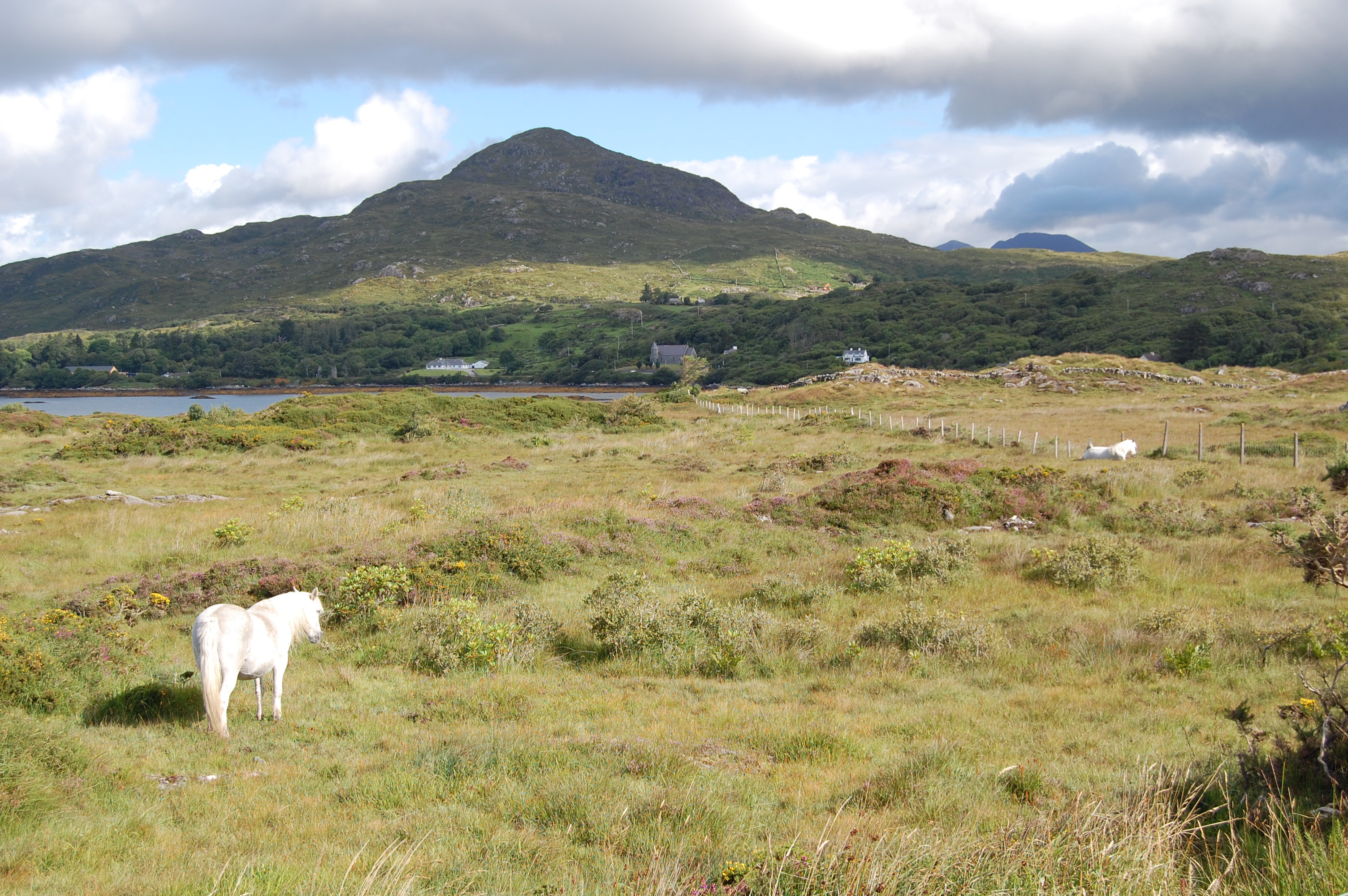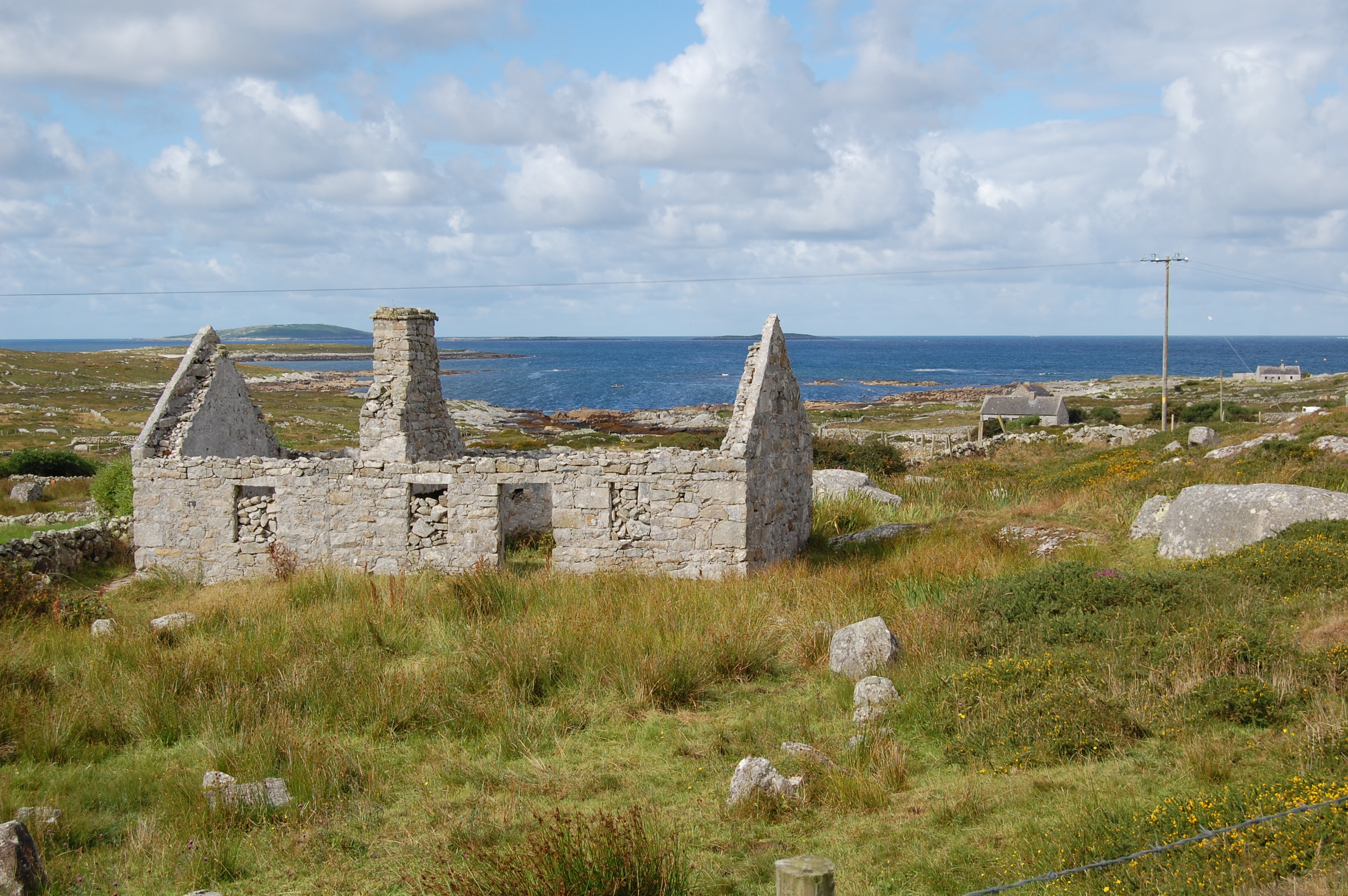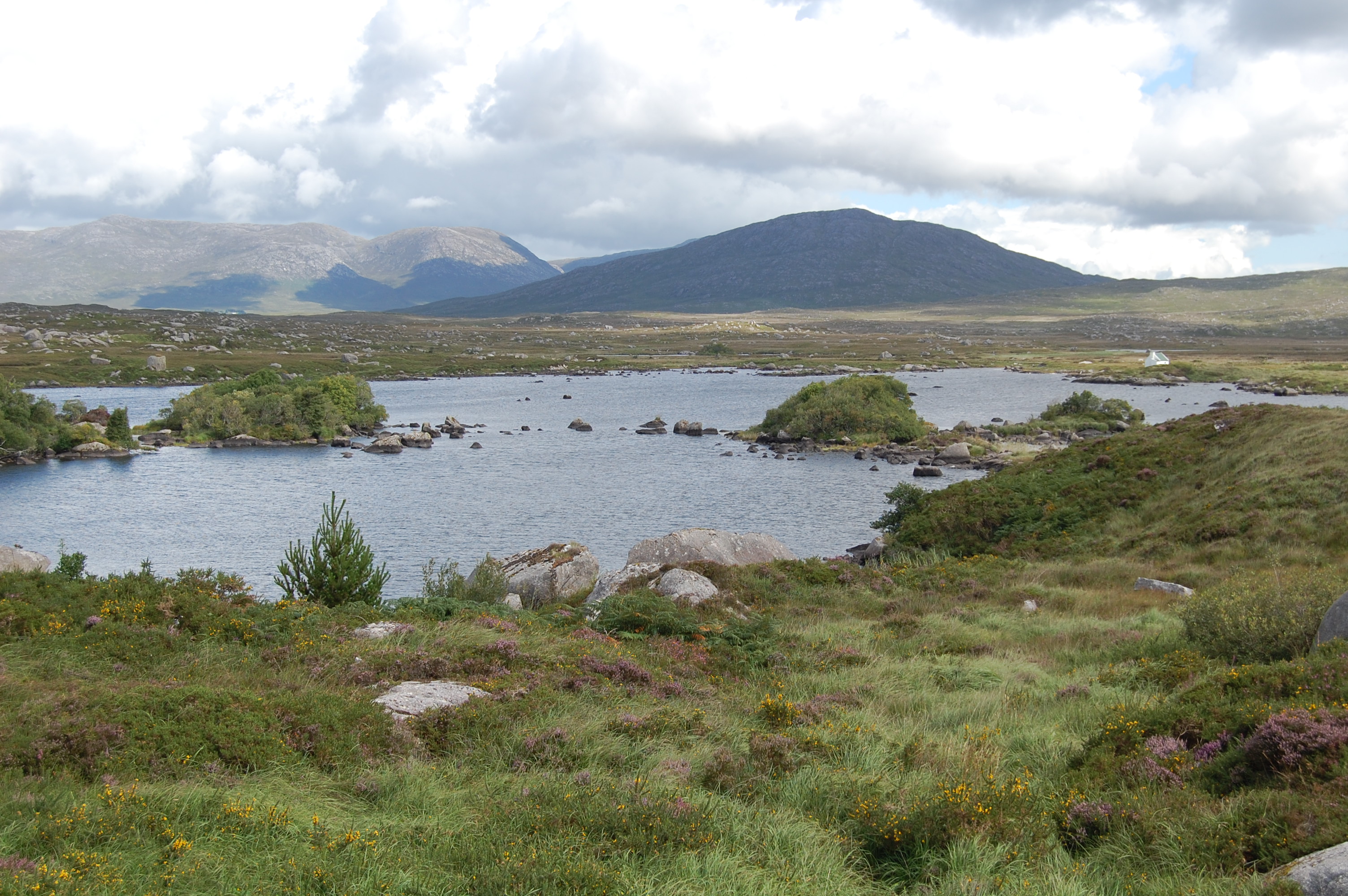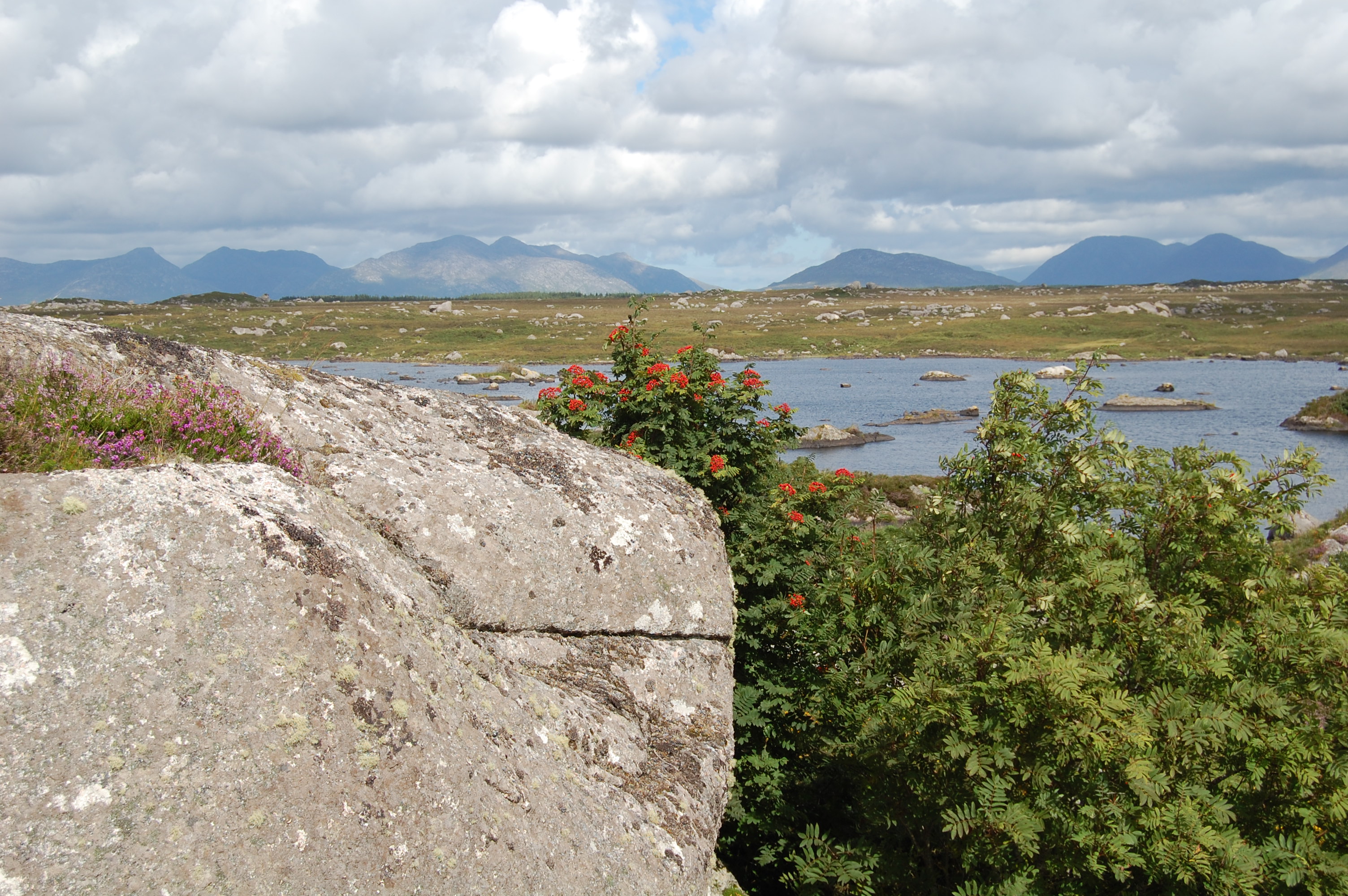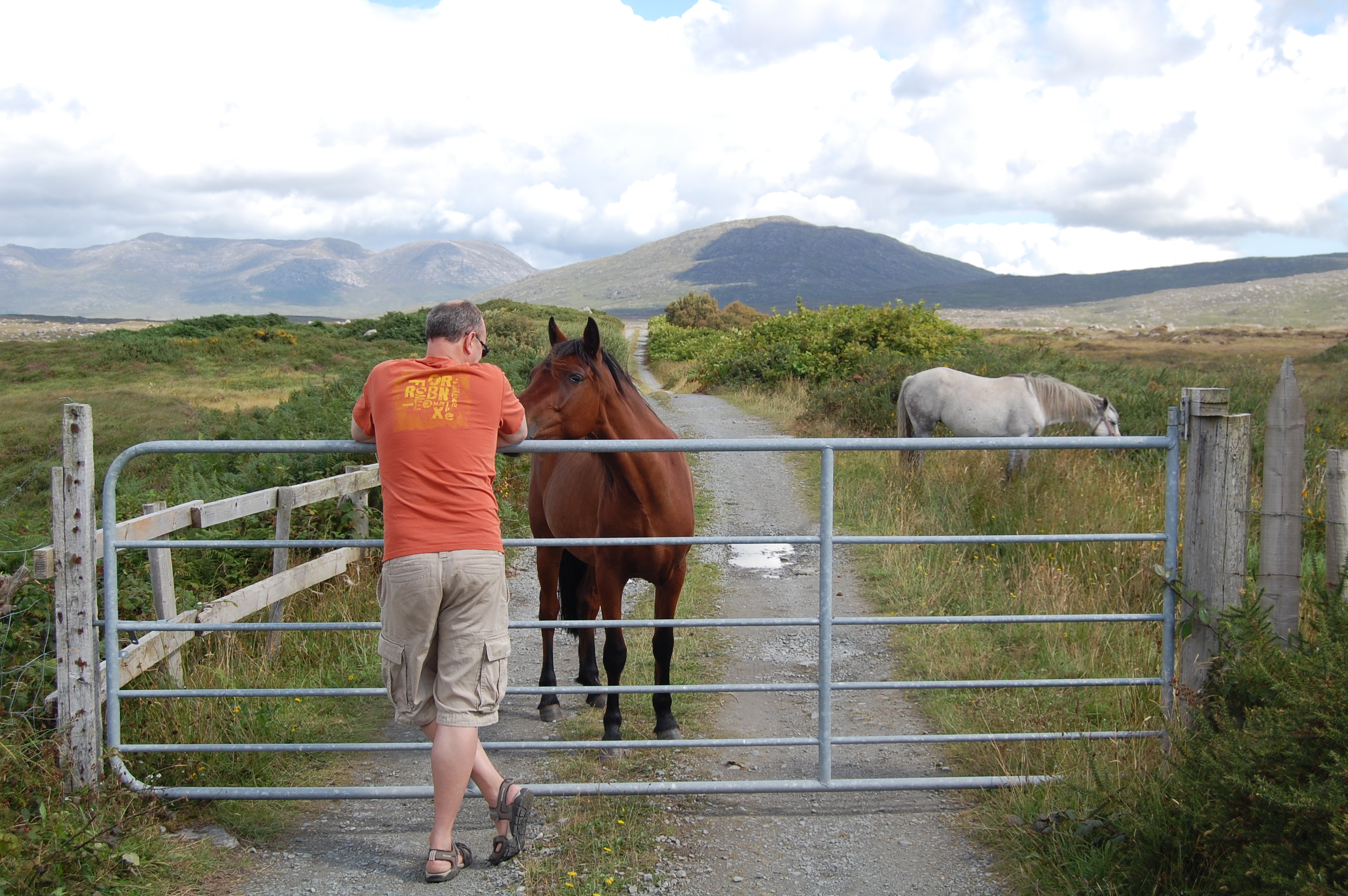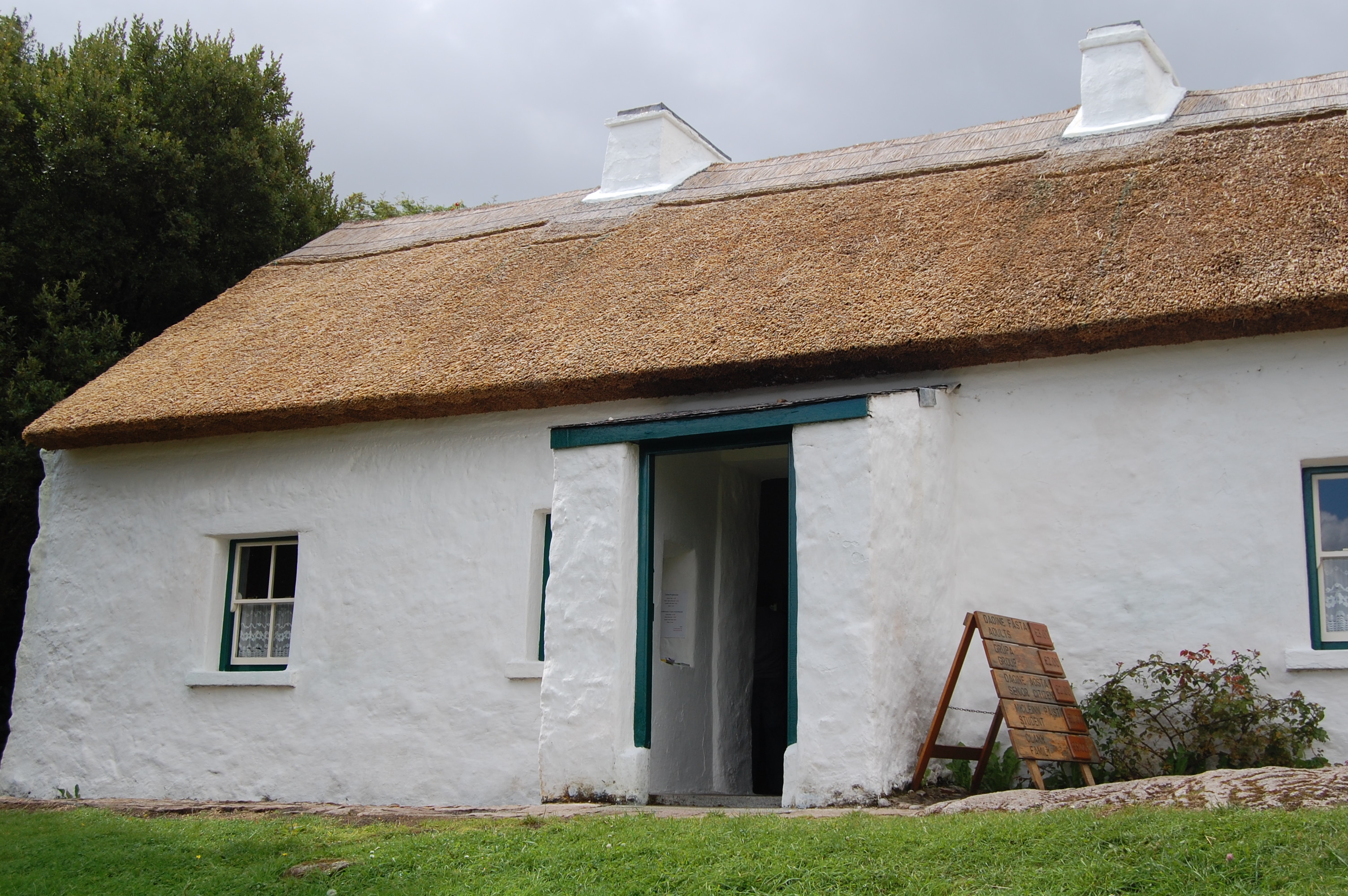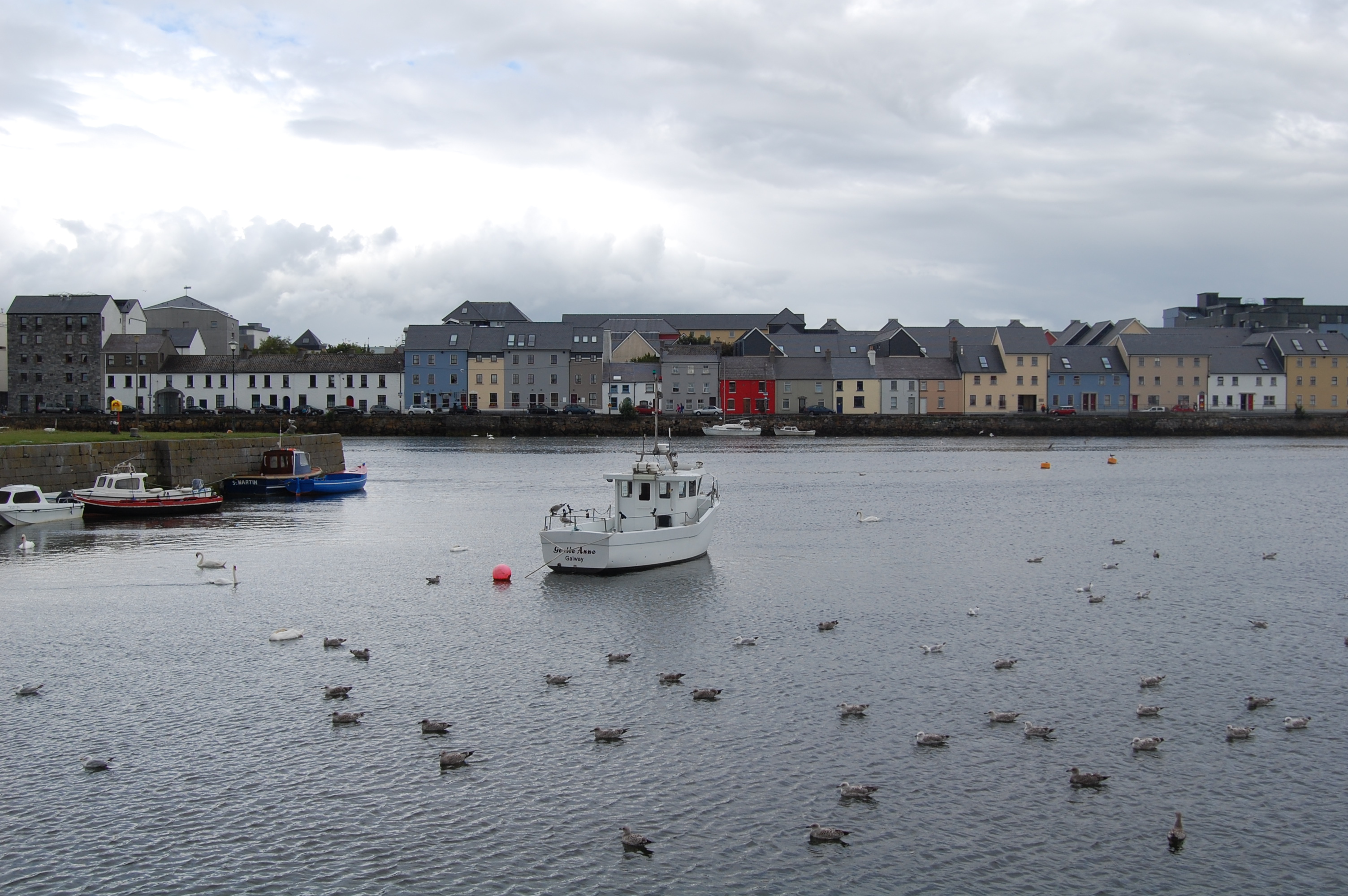Wild Atlantic Way
The Irish Tourist Board has cleverly rebranded the west coast of Ireland as the Wild Atlantic Way and helpfully posted signs with two blue W's--which look like a long ocean wave--all along the route. You don't need a map to do this trip, which makes it more relaxing. We hugged the coast south of Roundstone, making our way to Galway by following the blue wave.
We saw quite a few Connemara ponies (two in this field with Cashel mountain in the background).
Throughout the trip, I found my eye drawn to abandoned cottages. These weren't from the famine era--many were inhabited when I lived there in the 1970s. What is truly eerie is the newer houses that sit empty--many unfinished. They are strange bookends to Irish history.
A man I met on Inishowen peninsula in County Donegal interpreted Ireland's real estate thus:
In the 1800s, greedy English landlords, wanting ever larger houses (to keep up with the neighbors) demanded ever higher rents from their tenant farmers. Failing to extract enough food from the land to keep up with rent hikes, the farmers were evicted and many left Ireland. In the 2000s, the greed of the Irish--wanting ever larger houses to keep up with their neighbors--also led to the collapse of another unsustainable system and to exile. "So you see, we are not so different," he said. I found that a very generous admission.
Part of the Twelve Pins mountains visible.
David horsing around.
We spent a lot of time at Patrick Pearse's cottage at Ros Muc, learning about the school teacher who became a revolutionary as he realized his students had no future in a land that was hostile to its past. England's proxies in Ireland sought to extinguish Irish language, music, religion, and culture--anglicizing one and all to bend to the crown.
The revolution Pearse and his peers planned was destined to fail, however when these men were imprisoned and then executed, the British ignited a flame in the Irish that had almost been extinguished. The Irish who served in British units during the First World War came back well trained and able to plan a campaign that could succeed against the British. Michael Collins's militias matched the terror campaigns of the Black and Tans--body for body--until the British relinquished their hold and the Free State was created.
After the cottage, we rode bikes for a while and ended up on a spit of land with a lovely beach. On the rise above the beach was a cemetery, a common site. I guess maritime cultures believe their dead should be near the oceans that sustained them. I think being buried in Ireland is a good choice, if you go for that sort of thing, because of the gorgeous carved celtic crosses rising tall above so many graves.
We ended the day driving into Galway.
8/9
